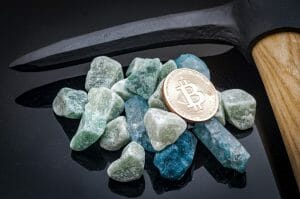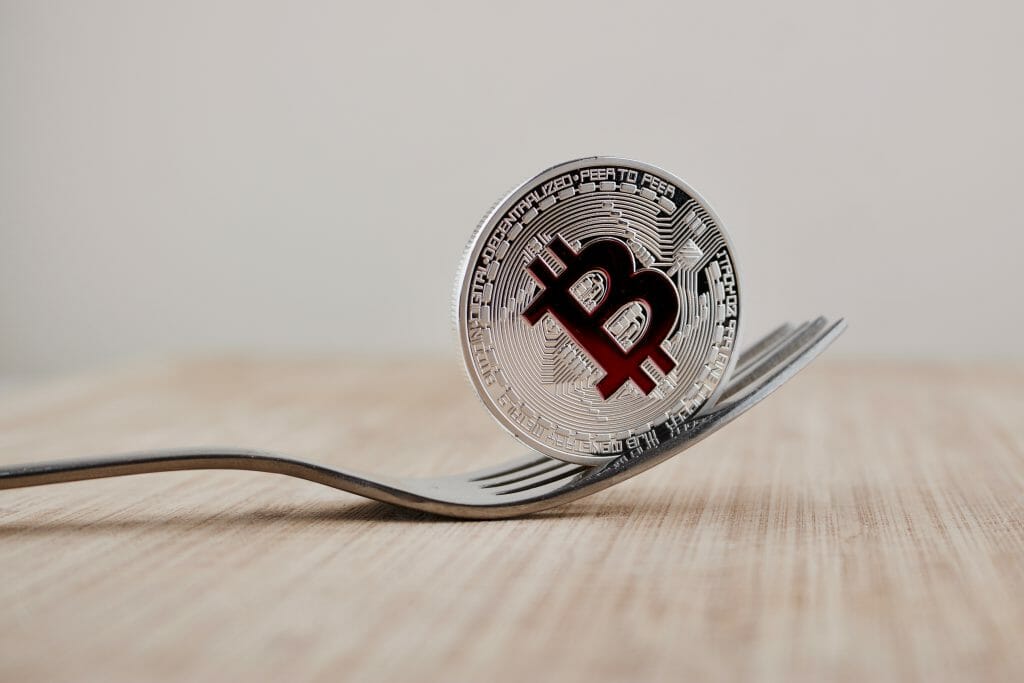This fall the Bitcoin blockchain will see some changes as two “hardforks” arrive: Bitcoin Gold, which took place on October 24, 2017, and SegWit2x, which is expected to arrive on or about November 18th. I say “on or about” because blockchain forks occur at specific blocks, rather than at specific dates and times. We may get to the affected block sooner or later than the estimated dates depending on the volume of changes moving through the BTC blockchain.
What the heck is a hardfork, anyway? It sounds like a really nasty dining implement. In reality, it means a new route, or chain, forks away from the main blockchain. It’s generally defined as a radical or extensive change to the current protocol running the blockchain on which the fork occurs.
First, a complete snapshot is taken of the chain so that it can be recreated without losing any data. Next, the rules, or protocols governing the BTC blockchain are updated. With the new rules in place, everything is updated, recreated, and reconfigured so that the new rules are in place.
Bitcoin Gold occurred at block 491,407, and the changes created a new token, Bitcoin Gold.
Why did this hardfork occur? Some people thought that miners (as a group) had too much influence over the entire Bitcoin network. Bitcoin gold replaced the current mining algorithm in the Bitcoin blockchain with one that cheaper graphics processing units can mine. This should, theoretically, open up opportunities for more miners. More miners, less control to the original group.
What a Hardfork Means to the Average BTC Owner
Now that you know what a hardfork is and what this latest fork means in general, let’s talk about what it means to you, personally. Unlike the first hardfork that resulted in Bitcoin adopting SegWit and Bitcoin Cash being born, the original Bitcoin blockchain did not undergo any changes or updates during this recent hardfork.
In the first instance, Bitcoin was undergoing a Segwit upgrade and Bitcoin Cash forked in order to retain the old Bitcoin blockchain – one with no SegWit. In the recent instance, Bitcoin didn’t have any upgrade. A fork occurred, but Bitcoin remained the same and a “upgraded” Bitcoin Gold blockchain was born with new mining protocols.
During a hardfork, BTC transactions can potentially take a lot longer to be completed on the blockchain. That’s because there are fewer active nodes. As more nodes are updated, and more come back online, activity picks up back to its usual pace.
A few tips to weather these hardforks from the perspective of the average bitcoin owner:
- First you need to decide whether you are looking for safety and security during the fork
 or if you are trying to profit from it.
or if you are trying to profit from it. - If you are looking for safety, you should choose a trusted exchange that has been around for a while and has liquidity or you should consider keeping your Bitcoins in an offline wallet.
- Both before and after a hardfork, the price of Bitcoin can jump and plunge due to people buying and selling. Expect the unexpected when it comes to Bitcoin prices.
- If you decide to hold onto your existing BTC, prepare at least 24-48 hours before the anticipated fork date. Remember, forks can occur a little earlier or later than anticipated because they are timed to blocks rather than dates. If the miners on the blockchain reach that block sooner than expected, the fork may occur faster than estimated.
- It’s not clear whether storing your BTC on an exchange or a custodial service that holds your private key will mean you eventually receive BTC, Bitcoin Gold (BTG) or SegWit2x (B2X). Look for your service’s official statement about the forks. Know what your service plans to do and provide for you. If a user intends to sell their forked coin, keeping some Bitcoin on a trusted exchange that plans to support the forked coin allows for quick and easy liquidation. Finding a wallet that supports the new coin, accessing the coins and transferring them to an exchange takes a lot of time and is not always successful.
- The safest method is to control your private key yourself, but it might not be the most practical.
- Want to obtain the forked coin, then sell it fast? You might want to leave some Bitcoin on an exchange as well as keep the remainder in a private wallet for which you control the key.
 After the latest hardfork, things should settle down when Bitcoin Gold launches around November 1. SegWit2x may play out differently. The world of cryptocurrency and blockchain is always shifting, so stay tuned for updates!
After the latest hardfork, things should settle down when Bitcoin Gold launches around November 1. SegWit2x may play out differently. The world of cryptocurrency and blockchain is always shifting, so stay tuned for updates!
By Jeanne Grunert – Editorial Director, iAM Marketing












Bitcoin is here to stay.I don’t care what the central banks around the world are speculating about it, they will never stop it from ascending in the market.They have no choice but to accept the cryptocurrency.